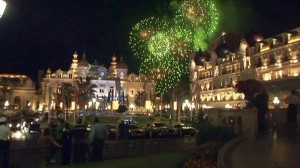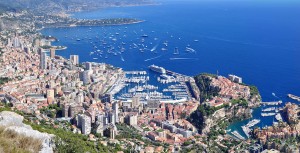- The Prince’s Palace : Built on the site of the ancient fortress, it features an Italian-style arcade known as the “Galerie d’Hercule”, which runs all along the State Appartments, the Throne Room, the Palatine Chapel built in the 17th century, and the Court of Honor where open-air concerts are performed in summer by the Monte-Carlo Philharmonic Orchestra.
- The ancient ramparts and narrow streets of Monaco-Ville : The Old Town on the Rock of Monaco is characterised by its narrow streets, vaulted passageways and ancient houses with numerous sculpted lintels.
- Monaco’s Cathedral : Built in 1875, it contains the tombs of former Princes. Visitors can see an altar-piece painted by Louis Bréa of Nice in 1500.
- Chapelle de la Miséricorde : Built in 1639, this chapel was the seat of the Brotherhood of Black Penitents. One can admire in particular a wooden sculpture of Christ by François-Joseph Bosio of Monaco, official sculptor to Napoleon Ist.
- Musée de la Chapelle de la Visitation : This baroque chapel built in the 17th century now houses part of a collection of religious artworks belonging to Mme. Barbara Piasecka-Johnson, including paintings by Rubens, Zurbaran…
- Museum of Oceanography Inaugurated in 1910 by its founder, Prince Albert I, this temple to the sea is world-famous for its collections but above all for its aquariums, including the much-visited “Shark Lagoon” inaugurated in 2001.
- Garnier Opera House : Inaugurated in 1879, the Salle Garnier, a fine example of “Belle Epoque” style, has long been, and still is, a place for premières of new operas by international composers.

- National Museum : Housed in the Villa Sauber, it is home to a collection of 19th-century dolls and automats amassed by Madeleine de Galéa.
- Japanese Garden Designed by the Japanese architect Yasuo Beppu, this garden of 7,000 m2 was inaugurated in 1994. A quiet, serene park blending stone, plants and water in classic harmony.
- Church of Sainte-Dévote : Built before 1070, restored in the 16th century and again in the 19th century, this church is dedicated to the Patron Saint of Monaco.
- Exotic Gardens Inaugurated in 1933, these gardens contain several thousand species of so-called “succulent” plants. Within the gardens’ boundaries, 60 metres below the surface, visitors can also discover the Observatory’s Prehistoric Grotto. The Exotic Gardens also play host to the Museum of Prehistoric Anthropology. Containing a series of tombs from areas close to the Principality, this museum, founded in 1902 by Prince Albert I, traces the most significant stages in the history of mankind.
- Exhibition of the Collection of Veteran Cars belonging to HSH the Sovereign PrinceVisitors discover here about 100 vehicles of all eras built by the greatest European and American manufacturers, as well as six carriages.
- Museum of Stamps and Coins This museum opened its doors in 1996 o provide a showcase for stamps and coins from the private collection of HSH Prince Rainier III.

- Princess Grace Rose Garden : inaugurated in 1984. It has about 4,000 rose bushes, of which over 150 varieties were created by the world’s top specialists.
- “Chemin des Sculptures” At the initiative of HSH the Sovereign Prince, the Principality has been enriched over the past few years by works by artists of international renown. Thus, sculptures by César, Arman, Botero, Folon, Lalanne, Emma de Sigaldi, Moore… have found their place in the gardens of Monaco. A pedestrian path enabling visitors to discover them has been specially laid out in the Fontvieille neighborhood.
Book your Bed and Breakfast for your stay on French Riviera
